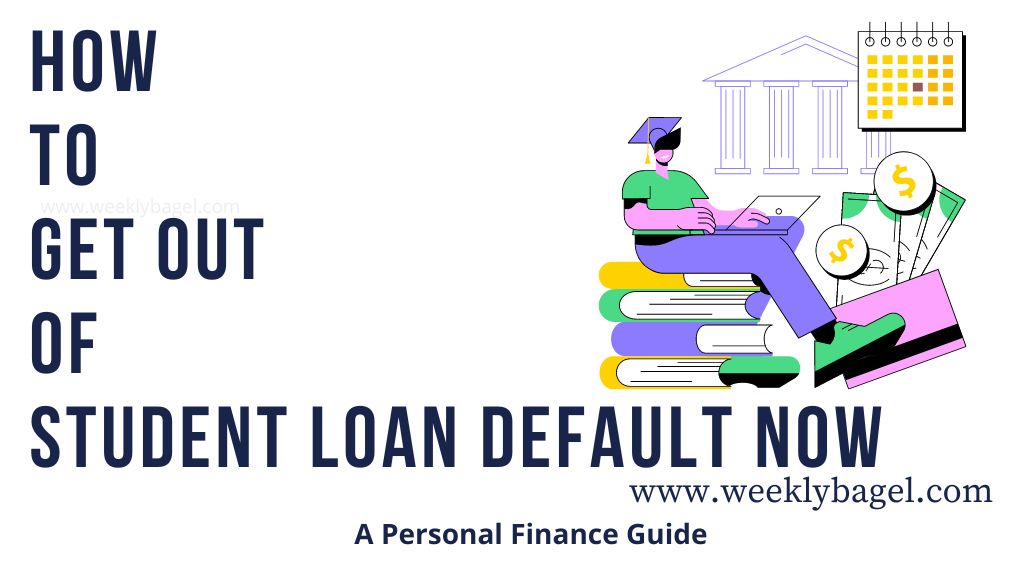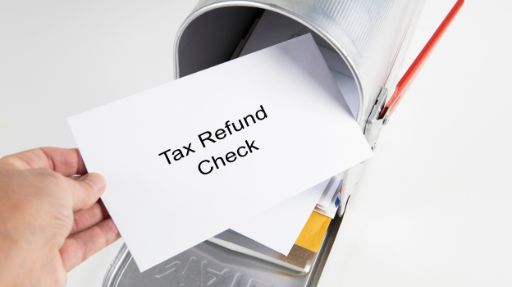
A federal student loan is said to be in default, when you miss scheduled loan payments. A loan default does not occur immediately after a missed payment. After a missed scheduled payment, your loan becomes delinquent (past-due).
In this stage, you are expected to reach out to your loan provider to discuss repayment options. This is when you call to ask for income-driven repayment plan or deferred payment. Either way, the point is to let your loan service provider know why there is a missed payment.
Otherwise, you will be reported to a credit bureau after 90 days of non-payment in a delinquent stage. Depending on the kind of loan you borrowed, days of non-repayment will cause federal student loan to go into default. Here is what I mean.
For William D. Ford Federal Direct Loan Program or the Federal Family Education Loan Program, you will go into loan default after at least 270 days of non-payment. A private student loan default, on the other hand, is after a missed scheduled payment.
At this point, getting a student loan out of default becomes imperative. Here is why.
What Happens During Defaulted Federal Student Loans
There are consequences of defaulting on student loans. They include:
I. Garnished Wages and Salaries
Did you know defaulted student loan can be garnished from your paycheck, good reader?
In case of a federal student loan default, the U.S department of education can take up to 15% of your wages. The interesting part of this process, is the department of education does not need the court to approve the garnishment.
Here is how serious this could be for you.
Let us say you make $3000 per month. The department of education will take $450 out of your pay, since $450 is 15% of $3000. This is a lot for an average student borrower, is it not?
Well, here are your rights under this consequence of defaulting on student loans.
- You will be informed, prior to the decision to garnish your wages.
- You can contest against this decision within 30 days of being informed. When you contest for it, it will delay the garnishment until your case is heard and decided.
- The U.S department of education and collection agencies cannot take more than $217.50 weekly.
If you succeed in appealing the decision to garnish your paycheck, a percentage of your wage may not be taken for a certain period of time. Otherwise, they may be less than 15% from your check monthly. Either way, you need a strong case to win.
2. Loss Of Annual Tax Refunds

When you default on your Federal student loans, the U.S department of education informs the IRS. It results in you not receiving your annual tax refund. This is because the refund will go towards your student loan debt payment.
You may be wondering, “Why go to such a length?”
Well, the federal student loan is government money. Therefore, the federal government needs to get its money back. The department of education- the official federal student loan lender, will work with the IRS to ensure you are not getting a tax refund with a pending federal student loan default.
Finally, this will stop when you get back on a repayment plan. Or even better, repay your student debt in full. If your student loan is in deferment, the loan service provider will not touch your tax refund.
3. A Bad Credit History
Loan service providers will report you to the credit bureau, when you stop making payments towards your student debt. Obviously, this will impact your credit score immensely. Hence, why it is important to avoid defaulting on federal student loans.
4. Loss Of Certain Privileges and Benefits
One of the consequences of defaulting on student loans, is you will loss certain federal benefits. Here is what I mean.
- You will be barred from applying for federal loans.
- Certain social security benefits may be garnished. However, this amount will not be more than 15% of the benefit.
This is in accordance to the Debt Collection Improvement Act of 1996. You can dispute this though. If you have any question, best to call your student loan service provider.
Having mentioned the above consequences, here are your options after defaulting on student loans.
Getting Student Loans Out Of Default
Your options of getting out of student loan defaults are:
1. Loan Consolidation

A loan consolidation means combining all previously borrowed federal loans into one loan. This is done through a Direct Consolidation Loan. It is offered by the U.S department of education for defaulted federal student loans.
There are two conditions to be met, before you consolidate a defaulted federal student loans. They are:
- You have to agree to repay the new consolidated loan on an income-driven plan.
- Or else, you have to pay three full consecutive payments before you are allowed to consolidate a defaulted federal student loan.
Personally, it is smart to consolidate student loans. This is because a student borrower is paying down one loan, rather than two or more loans every month. It makes it easy to negotiate an agreed monthly amount, which is to be paid once a month and not more.
Pros & Cons Of Consolidating Student Loans
Here is why student debt consolidation is a good idea.
- You qualify for deferment and forbearance after consolidation.
- You will be able to get federal student aid again.
- You are not burden with multiple payments per month to different loans.
- You become eligible to apply to loan forgiveness programs.
Despite these advantages, there are some reasons not to consolidate student loans. One of them is it appears on your credit history. Debt consolidation is bad for your credit history. Personally, I would not mind if I were in your shoes.
Better to have all the loans in one basket, than default as a result of missed multiple payments. Would you not agree?
What Student Loans Cannot be Consolidated?
Not all student loans can be consolidated, however most federal student loans can be consolidated; even subsidized and unsubsidized loans can be consolidated together. Student loan consolidation is not available for private education loans. This is because for a student loan to be consolidated, it has to be through a U.S department of education loan called Direct Consolidation Loan.
And, the U.S department of education does not offer private education loans.
In addition, loans borrowed on your behalf as a dependent cannot be consolidated with other federal loans you borrowed. One such loan is a Direct Loan Plus a parent(s) might borrow on behalf of their dependent children.
What Can Disqualify You From Loan Consolidation?
A current check garnishment.

Yes, a current wage garnishment by the U.S department of education or agencies can make you ineligible for student loan consolidation. To be eligible despite this restriction, you need the garnishment order removed.
You can do this by contacting your loan service provider to have the order removed. You login on the Federal student aid website here, to know who is your loan service provider.
Moreover, you can be ineligible for loan consolidation when there is a court order for your income due to loan default. To be eligible, you have to contest for the order to be removed. As mentioned earlier, you get notified when there is a court order against you after a prolonged loan default. Be sure to reply within 30 days.
2. Loan Rehabilitation
How does student loan rehabilitation work?
Well, you agree to pay certain amount of your debt consecutively over a period of time. For loan rehabilitation, one of its two conditions requires you to make 9 monthly payments. Each payment should be made 20 days before its due date.
Equally important, the nine payments must be completed within a period of 10 months. Do not fret about it though. The monthly payment can be very affordable. Usually, your tax file is needed to calculate your monthly payment.
What does this mean for you, my good reader?
It means your monthly payment can be quite low, when you have a lot of monthly expenses. The point of the loan rehabilitation is to get you out of a defaulted state in order to get you paying again. This is why your defaulted loan will not be on your credit history per agreement.
Pros & Cons Of Student Loan Rehabilitation Program
Here are two advantages you get, when you rehabilitate defaulted student loans.
- The defaulted student loans history are removed from your credit history.
- You will be eligible for other federal aid, as soon as you meet rehabilitation conditions.
- Your monthly payment can be less than a Macdonald meal.
While the advantages are good, there is one con of student loan rehabilitation program. Well, your student loan rehabilitation can only occur once. You get one chance at getting your student loans out of a default through this program.
After that, you cannot rehabilitate a defaulted student loan a second time.
How to rehabilitate student loans
If you default on a federal student loan, you can rehabilitate your student loan in default using these steps.
1. Contact Your Loan Service Provider
Firstly, reach out to the U.S department of education- the federal student loan lender or the appropriate lending agency. They will tell you the documents you need to provide in order to discuss loan rehabilitation.
2. Agree To A Repayment Plan

To be able to rehabilitate your defaulted student loans, you have to agree to two conditions; you are to pay nine consecutive payments over a period of ten months and make the payments twenty days before due dates. Usually, the payment is not more than 15% of your monthly income.
Further, this amount is structured around your monthly expenses and previous annual tax file. What this means, is you can be paying as little as a Macdonald’s meal cost during the agreed probation period.
3. Sign the Agreement
Once you have signed the conditions of rehabilitation, you are expected to adhere to them. Otherwise, you will lose the ability to reapply again. This is because you can only rehabilitate a defaulted federal student loan once.
Here is a word of advice.
Payments made prior to the signed agreement, do not count toward loan rehabilitation. So, it is better to sign before making payments toward your defaulted loans. Most importantly, it is good to stick through the payment plan since you only get one shot at this.
4. Reach Out In Case Of Financial Difficulties
If you ever experience financial difficulty during the agreed period, reach out to your loan service provider. They will work with you to ensure you do not break the contract. If not, you may miss your schedule payments.
Therefore, lose your ability to rehabilitate your student loan debt again.
In case of a disability which impedes your ability to follow through with the loan rehabilitation conditions, here is a loan forgiveness program for disabled people. The U.S department of education started discharging loans for Total and Permanent Disabled graduates as of March 2021.
3. Loan Repayment In Full Amount
The third way of getting out of a student loan default is to pay the debt in full. If you can afford to pay back the amount in full, do it to avoid student loan default consequences.
But, let us be realistic here.
Not all student borrowers can afford to pay back their student loans in full. According to a University Of Washington article, 53% of college graduates are either unemployed or work in a non-bachelor degree career. Often, a non-bachelor degree career translates into a low paying job.
For such an average college graduate, a loan repayment in full is not an option. Hence, why the other two options of getting out of student loan default are important. But, if you could do it, please pay student debt in full and avoid the headaches of a defaulted federal student loan.
With that said, here is how I was able to graduate college debt free. I was able to graduate college twice with no student loan debt. Click on the highlighted link to see how I did it.
Avoiding Student Loan Default: What to do

To avoid a student loan default from happening in the future, here are what you could do:
1. Be Consistent With Payment Plan
A defaulted loan occurs, when a payment is missed. Therefore, it is important to always pay scheduled monthly payment. Doing so, will help you avoid a student loan default.
2. Be In Touch With Loan Service Provider
Always reach out to your loan lender, whenever there is a problem which impedes your ability to repay debt. This is especially a disruption of your monthly income. Or worse, an increase in your monthly expenses.
Why is this important?
This is important, because your loan lender can help you defer your monthly payment. Sometimes, they can lower your monthly payment to accommodate you, until your financial problem is over. The U.S department of education has programs in places for such unforeseen circumstances.
3. Do Not Borrow More than You Need
I have always emphasized of being practical, when it comes to student loans. It is important to borrow for academic expenses. For your living expenses, you can work to cover them.
Here are my reason for this emphasis, dear reader.
Some majors do not have a good financial return after graduation. The amount borrowed for such majors, are usually greater than the annual salary of the post-graduation careers. In such a circumstance, it is wise not to borrow a lot to study for such a major.
Unless your future career can comfortably repay your student debt, stay within your financial means when it comes to borrowing a student loan. This will help you not to get into a student loan default in the future, since you can afford to pay back your student loan in a timely manner.
If not, all I have written here will help you get out of a student loan default. If you have any questions, be sure to contact the U.S department of Education or your student loan provider. Beware of calls seeking to get your private info to help you out of a student loan default. There has been a lot of student loans scams recently through these calls.




 Which Student Loan Is Best For You
Which Student Loan Is Best For You